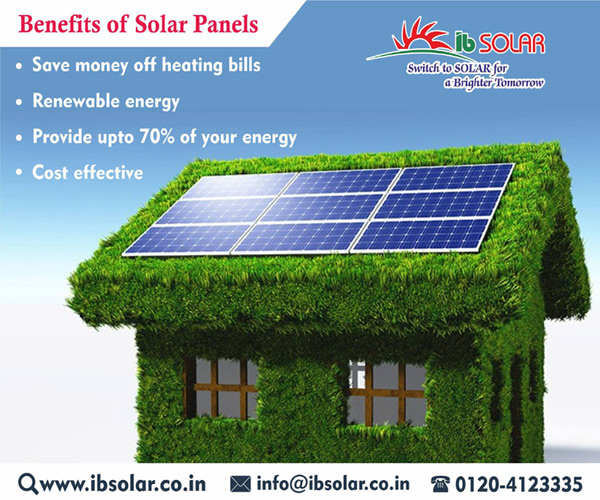Switch to Cost-Effective Clean Energy with Simply Solar Illinois
Switch to Cost-Effective Clean Energy with Simply Solar Illinois
Blog Article
Solar Power 101: A Novice's Overview to Sustainable Energy Solutions
As the globe progressively moves in the direction of sustainable energy solutions, recognizing the principles of solar power comes to be vital for both individuals and companies. This guide provides a complete review of solar power, detailing the various systems offered and the devices behind their operation. By exploring the advantages of solar innovation, together with the monetary motivations and installation processes, one can get a more clear viewpoint on exactly how to properly incorporate this sustainable source right into their energy technique. The journey towards embracing solar energy welcomes additional evaluation of the obstacles and factors to consider that come with it.
Recognizing Solar Power
At its core, understanding solar energy includes comprehending the essential principles of just how sunshine can be transformed into usable power. Solar energy is derived from the sunlight's radiation, which can be harnessed with numerous innovations.

Recognizing solar power additionally involves identifying its ecological benefits. By utilizing sunshine, we can alleviate greenhouse gas emissions and reduce air contamination, adding to a more lasting future. The innovations in modern technology and efficiency of planetary systems proceed to improve their viability, making solar power a significantly attractive option for international energy requirements.
Sorts Of Solar Power Systems
Various kinds of solar power systems are generally utilized to harness solar energy for electrical power generation. The main groups include solar (PV) systems, concentrating solar energy (CSP) systems, and solar thermal systems.
Photovoltaic systems utilize photovoltaic panels made up of silicon cells that convert sunshine straight into electrical power. These systems are flexible and can be installed on roofs, ground mounts, or integrated into structure products.
Focusing Solar Power systems, on the other hand, employ mirrors or lenses to focus sunshine onto a little area, producing warm that drives a steam generator to produce power - Simply Solar Illinois. CSP systems are normally released in large power plants and call for direct sunshine, making them less appropriate for cloudy regions

Each kind of solar energy system has its special characteristics, applications, and viability depending on geographical area, power requirements, and budget plan, making it vital to examine options based upon details circumstances. - Simply Solar Illinois

Benefits of Solar Energy
Harnessing solar energy via different systems not only gives a sustainable method to create electrical energy but likewise uses a plethora of benefits. Among the most substantial benefits is the reduction in greenhouse gas discharges, adding to a cleaner setting and combating climate adjustment. Solar power websites is renewable, suggesting it is endless and available as long as the sunlight beams, unlike nonrenewable fuel sources, which are limited and depleting.
Furthermore, solar power can cause significant price financial savings in time. navigate to this website Homeowners and organizations can minimize their power bills dramatically, and oftentimes, they might gain credit histories for excess power created via net metering. Furthermore, the solar market produces work, from making to setup, boosting regional economies.
One more engaging advantage is power independence. By producing their very own power, people and neighborhoods can minimize reliance on exterior energy sources, improving strength versus fluctuating power rates and supply disturbances. Additionally, solar power systems require very little maintenance, making them a hassle-free option for lasting power generation.
Installation Refine Summary
The installation process for solar power systems commonly involves a number of key actions that make certain effective combination right into a residential property. Originally, a comprehensive website analysis is conducted to assess the roofing system's positioning, shading, and architectural honesty, which are crucial to optimizing photovoltaic panel performance. Following this analysis, the layout phase commences, where a customized solar energy system is configured based upon the house owner's power demands and preferences.
Once the layout is completed, the needed licenses and approvals are obtained from neighborhood authorities, making sure conformity with regulations. The actual installation entails installing the solar panels on the roofing system or ground, attaching them to an inverter, and incorporating the system with the building's electric arrangement. This phase may also entail mounting battery storage systems, depending upon the style.
With the installation complete, the solar power system can begin creating eco-friendly power, contributing to sustainability and minimizing utility prices. This structured strategy makes sure that solar systems are both efficient and reputable, maximizing their long-term advantages.
Financial Motivations and Cost Savings
Discovering the economic incentives and financial savings connected with solar power systems can considerably boost the charm of making the switch to renewable resource. Numerous incentives exist at federal, state, and local levels, designed to reduce the first costs related to solar installation. One of the most noteworthy incentives is browse around this site the federal solar tax debt, which enables home owners to deduct a percent of their solar system installment prices from their federal taxes. Since 2023, this credit rating stands at 30%, providing significant savings.
Along with tax obligation credit scores, several states provide rebates that can even more lower ahead of time expenditures. Some energy firms also supply performance-based rewards, satisfying solar energy manufacturing in time. Financing alternatives, such as solar fundings and leases, allow consumers to mount systems with little to no down settlement, making solar power more obtainable.

In addition, solar systems can raise property values, supplying a strong return on financial investment. On the whole, the combination of motivations and cost savings makes solar energy a financially eye-catching option for lots of families.
Conclusion
In conclusion, solar power stands for a vital component of sustainable energy services, providing a path towards decreased carbon footprints and enhanced ecological defense. Ultimately, the transition to solar energy not just promotes ecological obligation yet also promotes financial cost savings and energy self-reliance.
Report this page